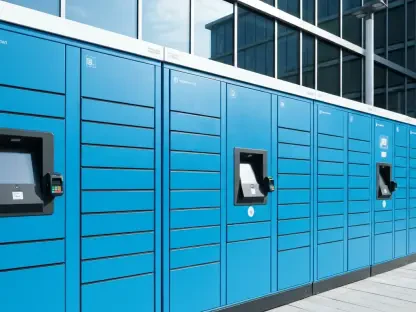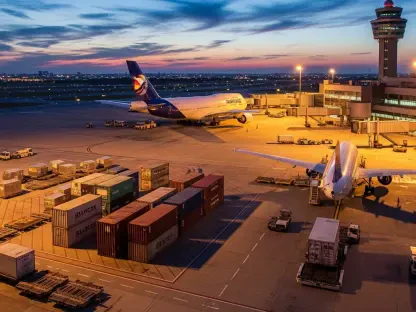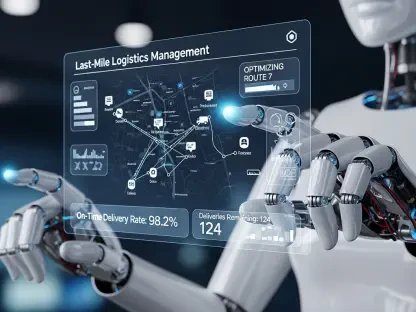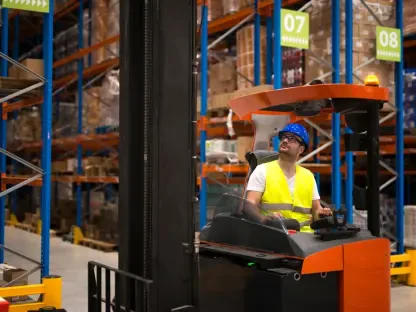The automotive industry is increasingly at risk of cyberattacks, with the supply chain becoming a prime target for malicious activities. As the interconnectivity within the sector grows, so does the complexity of the cybersecurity challenges faced by stakeholders. It is crucial to understand these threats and implement strategies to mitigate them.
Understanding the Surge in Auto Supply Chain Vulnerabilities
The Automotive Supply Chain Ecosystem
The supply chain in the automotive industry represents a sophisticated network of participants, ranging from small suppliers to global manufacturers, each playing a pivotal role in the creation and distribution of vehicles. As automobiles evolve to become more like computers on wheels, the need for cybersecurity within this ecosystem becomes profoundly apparent. A vehicle today is built with software and components that are frequently connected to the internet, exposing them to cyber threats in ways never seen before. Interactions among manufacturers, third-party software vendors, and suppliers create multiple touchpoints vulnerable to security breaches.
The Factors Compounding Cyber Risks
The auto supply chain is confronted with cybersecurity challenges magnified by the use of legacy systems and the lack of cohesive security measures. The absence of standardized cybersecurity terminology across different entities results in unclear policies and procedures, which creates confusion and leaves gaps in defense strategies. Such poor integration of security practices becomes an enticing point of entry for hackers. Additionally, the relentless pressure to reduce costs and accelerate product development cycles often leads companies to overlook the implications for cybersecurity, further endangering the integrity of the automotive supply chain.
Seqrite’s Cyber Threat Report Insights
Examining Seqrite’s Findings
Seqrite’s Cyber Threat Report has shed light on the unsettling increase in attacks on the automotive sector. As entities in this domain delve deeper into digital transformation, the number of vulnerabilities has surged, providing fertile ground for cyber threats. Seqrite’s analysis, validated by Seqrite Labs and the Data Security Council of India, reveals that the sector might not be as equipped to handle such threats as previously thought. This alarming trend places immense pressure on stakeholders to reassess their current cybersecurity measures and address the systemic weaknesses evidenced by the report.
Cyber Threats by the Numbers
An examination of the statistical data from Seqrite’s report indicates a dramatic escalation in cyber incidents within the auto supply chain. It’s not just the frequency of these attacks that’s concerning but also the sophistication and the potential harm they can cause. For instance, ransomware that targets a supplier could halt the production line of a major manufacturer, leading to significant financial loss and disruption. Intellectual property theft is another prevalent concern, with proprietary designs and technology at risk of being exfiltrated and duplicated.
Strategies for Enhancing Cybersecurity in Auto Supply
Implementing Robust Cybersecurity Measures
To combat the rising tide of cyber threats, Seqrite underscores the importance of robust cybersecurity measures. For automotive suppliers and manufacturers, this means not only installing firewalls and antivirus solutions but also taking a more strategic approach. Network segmentation can prevent the spread of a breach across different departments. Strict authentication protocols and access controls ensure that only authorized personnel handle critical information and systems. It’s about creating multiple layers of defense so that if one is bypassed, others stand firm to protect the network.
Promoting a Cybersecurity Culture and Industry Collaboration
Beyond technological defenses, there’s a pressing need for a shift in organizational culture to place a greater emphasis on cybersecurity. Employees at every level must understand the critical role they play in maintaining security and be trained to recognize potential threats. Additionally, cross-industry collaboration could prove invaluable. By sharing threat intelligence and best practices, companies within the automotive supply chain can develop a unified front against cyber adversaries. Reinforcing cybersecurity is not a competitive matter but a collective goal for industry sustainability.
Evolving Landscape of Logistics and Automotive Supply Chain
Innovations in Supply Chain Logistics
The logistics aspect of the automotive supply chain is witnessing its own set of evolutions. As companies like Maersk introduce air freight services, the demand for cybersecurity expands to new territories. Shared warehouses, while enhancing efficiency and logistics, also introduce new cybersecurity challenges that require innovative solutions. The integration of such advanced logistical services must be accompanied by corresponding advancements in cybersecurity practices to ensure that the entire ecosystem remains secure.
Progress in Supply Chain Policies and Infrastructure
As the automotive industry becomes more interconnected, its vulnerability to cyber threats increases. This is especially true for its supply chains, which are now common targets for cybercriminals. The complexity of cybersecurity concerns escalates in parallel with the surge in interconnectivity among industry players.To counter these growing threats, understanding the nature of these cyber risks is vital. This includes recognizing that as vehicles become more technologically advanced, they offer more points of entry for hackers. Automotive cybersecurity now extends beyond the vehicles themselves to encompass an entire ecosystem which includes manufacturing, supply, and operational frameworks.Cybersecurity measures need to keep pace with these evolving threats. Stakeholders must take a proactive stance by implementing robust security strategies that cover all aspects of the interconnected automotive network. This requires a concerted effort that combines the use of advanced cybersecurity technologies, comprehensive risk assessments, employee training, and rigorous incident response plans.It is a multifaceted battle against a sophisticated and constantly evolving enemy. The industry must not only protect individual components of the automotive chain but also the integrity of entire systems. By doing so, it can help safeguard the vehicles on our roads and the infrastructures that support them, thereby ensuring the safety and trust of consumers and the public at large in the increasingly digital age of automobiles.









